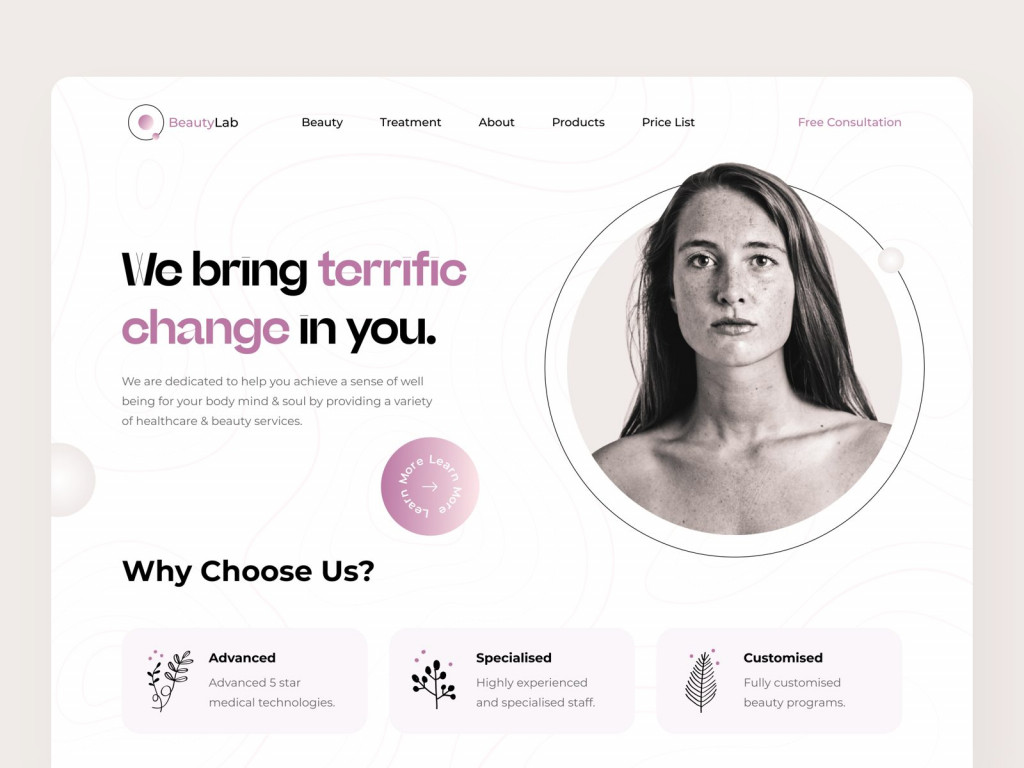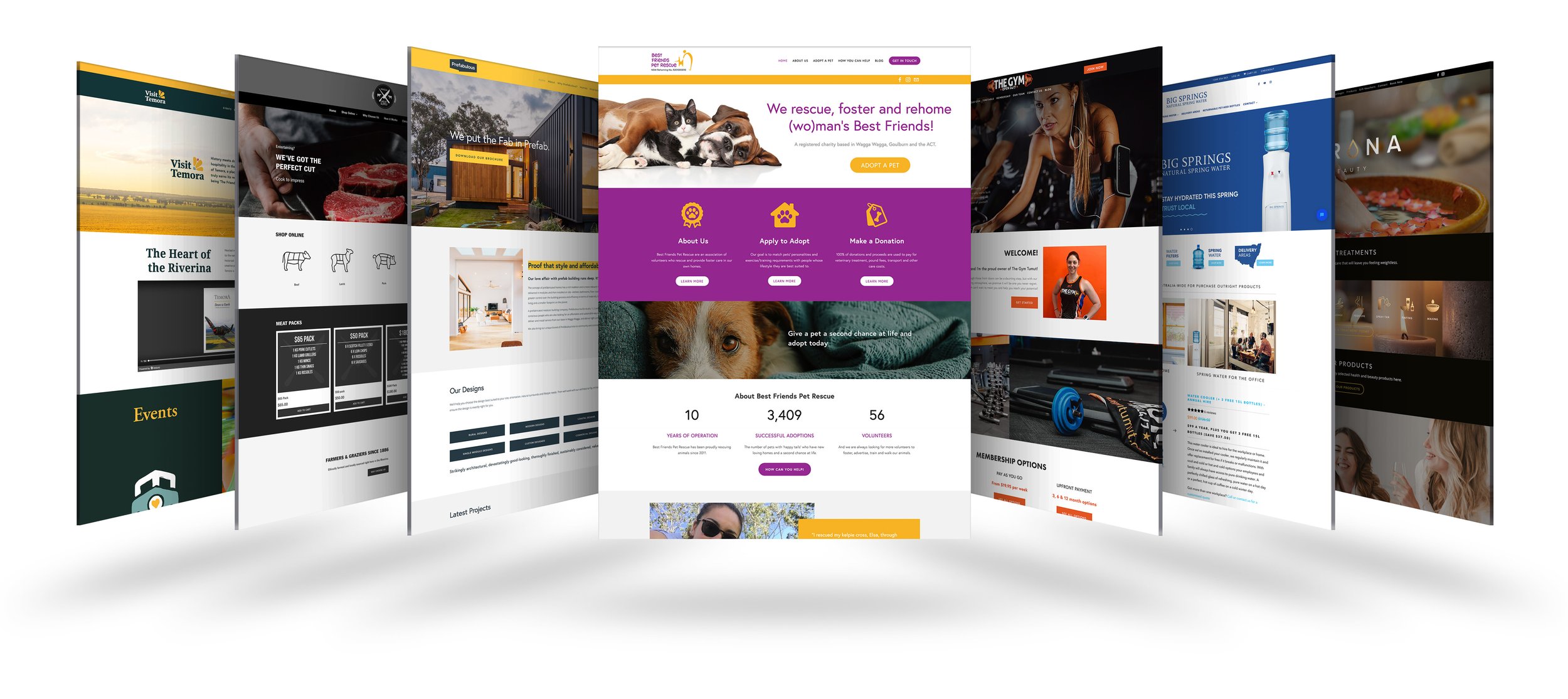The Power of User-Centered Internet Site Style in Expanding Your Online Target Market
In a progressively affordable electronic landscape, the relevance of user-centered website style can not be overstated. By concentrating on the needs and actions of users, organizations can produce web sites that not only attract but additionally engage a varied audience. Efficient design principles-- such as intuitive navigation and availability-- are important in promoting user satisfaction and loyalty. However, recognizing just how to leverage these concepts successfully raises crucial inquiries about execution and effect. What techniques can companies adopt to ensure their styles resonate with customers and inevitably drive growth?

Comprehending User-Centered Design
User-Centered Layout (UCD) is a basic strategy to website development that prioritizes the needs, preferences, and actions of end individuals throughout the layout procedure. This technique highlights understanding users deeply-- via research methods such as interviews, surveys, and use testing-- to create a website that reverberates with them. By incorporating customer feedback at every stage, designers can make certain that the end product aligns carefully with user assumptions.
UCD promotes iterative style, where models are tested and fine-tuned based on user interactions and experiences. This cycle not just improves functionality however likewise cultivates a sense of ownership among users, as they feel their input is valued and impactful. Additionally, UCD assists recognize prospective barriers and pain points in the customer trip, enabling developers to deal with these obstacles proactively.
Inevitably, welcoming UCD causes web sites that are more user-friendly, interesting, and efficient. By placing users at the center of the design process, organizations can develop electronic experiences that not just bring in yet likewise retain their target audience, driving higher fulfillment and loyalty. In an affordable on the internet landscape, this technique is necessary for achieving sustained success.
Trick Concepts of User Experience
A successful individual experience (UX) hinges on several vital principles that assist the layout process and improve communication between customers and the web site. Usability is paramount; the site has to be intuitive, allowing users to navigate easily and discover information promptly. This consists of clear labeling and a sensible structure that minimizes cognitive tons.
Secondly, ease of access plays an important duty in guaranteeing that all customers, regardless of their capacities or specials needs, can properly involve with the internet site. Integrating alt message for photos, key-board navigation, and display viewers compatibility fosters inclusivity.
Uniformity is another crucial principle. A natural layout language, from shade systems to typography, helps users construct familiarity and depend on with the site (Website Design). It also strengthens brand identity
In addition, responses mechanisms are vital. Customers ought to get instant and clear responses to their actions, whether via visual signs or verification messages, which enhances their confidence in navigating the site.
Last but not least, mobile responsiveness can not be overlooked. With a raising number of users accessing websites by means of mobile phones, a layout that adjusts flawlessly to different display sizes is essential for maintaining a favorable customer experience.

Benefits for Online Interaction
Efficient online involvement provides many benefits that can substantially enhance a website's general efficiency - Website Design. By cultivating meaningful interactions in between users and the site, companies can cultivate a devoted audience that returns with uniformity. Engaged individuals are more probable to share web content, thereby boosting natural reach and bring in brand-new visitors with word-of-mouth promo
Enhanced online engagement likewise leads to boosted user fulfillment. When individuals find a site that reverberates with their requirements, they are extra likely to explore its offerings extensively, which can cause higher conversion prices. Additionally, engaging content encourages individuals to invest even read this more time on the website, reducing bounce rates and favorably affecting search engine ranking algorithms.
Additionally, efficient interaction gives important understandings into user preferences and actions (Website Design). By examining user interactions, organizations can customize their web content and design methods to fulfill the evolving assumptions of their target market. This flexible approach not just enhances involvement however also strengthens the brand name's online reputation as receptive and user-centric
Ultimately, prioritizing online involvement through user-centered style produces a successful ecosystem where both the company and the target market advantage, resulting in sustained growth and success in the electronic landscape.

Techniques for Efficient Style
To take full advantage of the benefits of online interaction, using certain techniques in site design is critical. First, intuitive navigating is necessary; customers must conveniently discover details without confusion. A well-structured menu, clear labels, and a rational pecking order boost the customer experience and reduce bounce prices.
Second, responsive layout is essential in today's multi-device environment. Making certain that an internet site adapts perfectly to numerous screen dimensions cultivates accessibility, thus fitting a broader target market. This flexibility not only boosts individual contentment but likewise positively impacts internet search engine rankings.
Third, using visual power structure overviews customers' focus to crucial components, such as telephone calls to action (CTAs) Employing contrasting colors, differing font sizes, and strategic spacing can efficiently direct individuals toward desired actions, promoting better interaction.
Additionally, applying constant branding throughout all web pages develops count on and recognition. A natural shade typography, scheme, and imagery strengthen brand name identification and create an expert appearance.
Lastly, enhancing loading rates is crucial. Users are less likely to engage with a slow-loading site, making efficiency optimization a vital facet of reliable layout. By incorporating these techniques, web site creators can enhance individual experience and ultimately grow their online target market.
Real-World Success Stories
Success tales in user-centered web site layout illustrate the concrete benefits of prioritizing user experience. As an outcome, they experienced a 250% boost in online contributions, demonstrating how an intuitive layout can drive user interaction and assistance.
One more compelling case is that of Airbnb, which made use of user-centered style principles to improve their booking process. By streamlining the customer trip and integrating personalized resource recommendations, they significantly decreased website desertion rates. This concentrate on individual experience added to a profits development of over 70% in a single year, emphasizing the correlation between properly designed interfaces and financial success.
In addition, the e-commerce titan, ASOS, implemented customer screening to improve their mobile application. By dealing with individual pain factors, they achieved an impressive 30% boost in mobile sales. These instances highlight that buying user-centered style not just boosts customer contentment however also drives substantial company results, reinforcing the crucial function of user experience in accomplishing online development.
Final Thought
By prioritizing customer requirements and preferences, businesses can produce instinctive and accessible digital experiences that cultivate commitment and drive conversions. The integration of customer feedback throughout the layout procedure not just lowers bounce prices but additionally motivates expedition.
User-Centered Layout (UCD) is an essential approach to internet site development that prioritizes the demands, choices, and actions of end individuals throughout the design Related Site procedure. By incorporating individual feedback at every phase, designers can guarantee that the final product straightens very closely with user expectations.
A successful customer experience (UX) hinges on a number of vital principles that direct the design process and enhance interaction between individuals and the web site.Success tales in user-centered web site style show the substantial advantages of prioritizing individual experience. These examples highlight that investing in user-centered layout not only improves customer complete satisfaction however additionally drives tangible business results, strengthening the important role of user experience in attaining on-line growth.